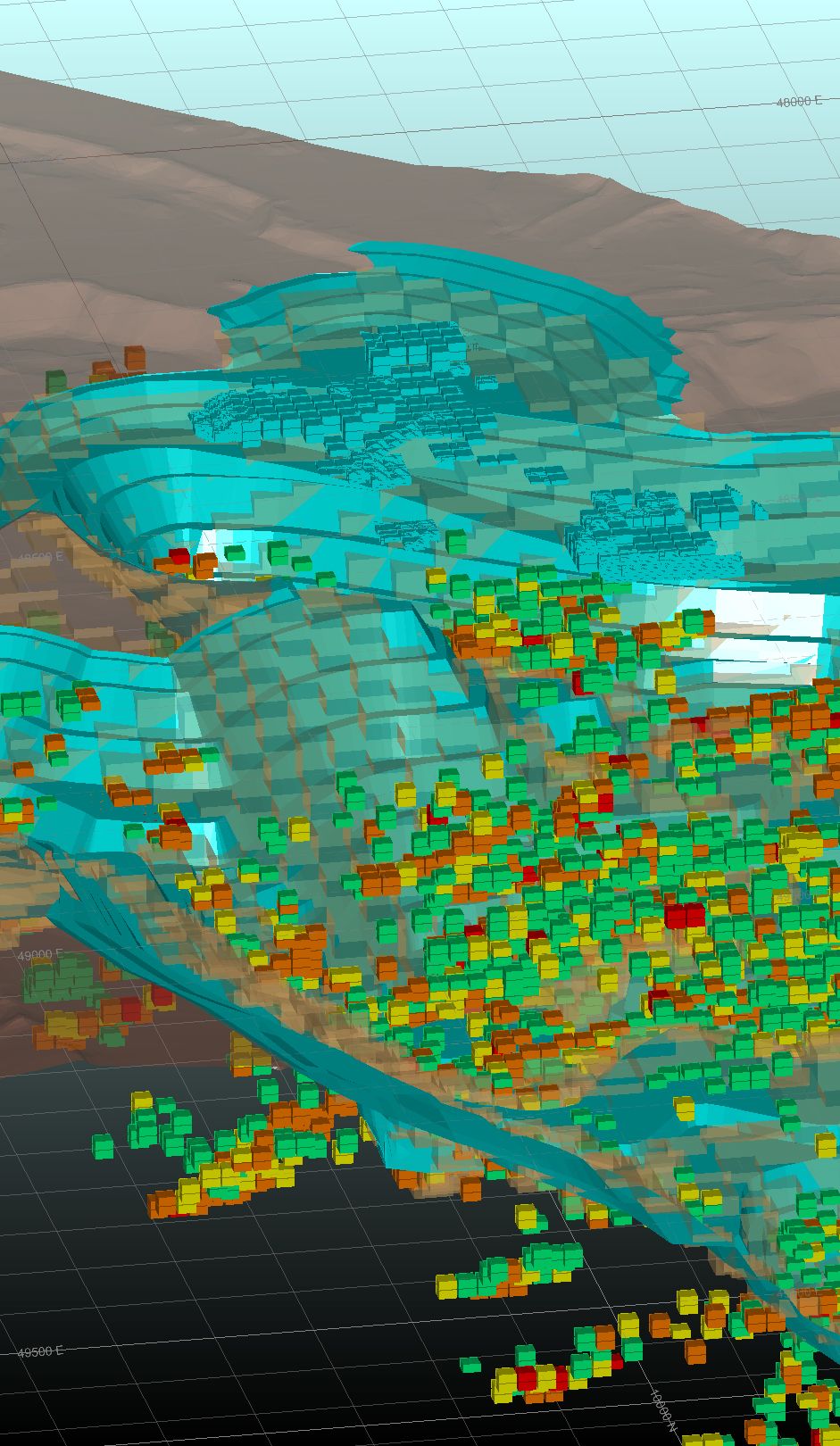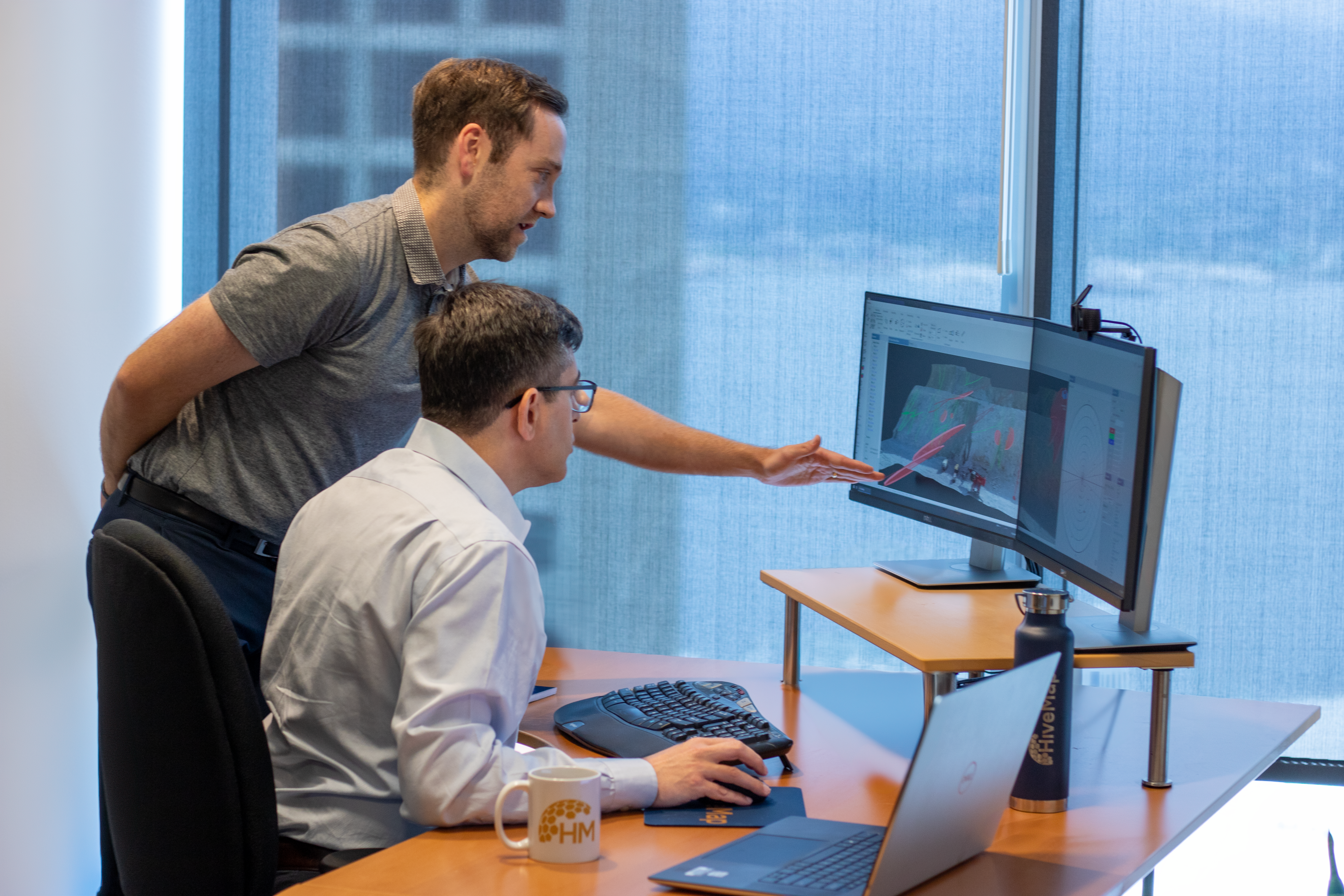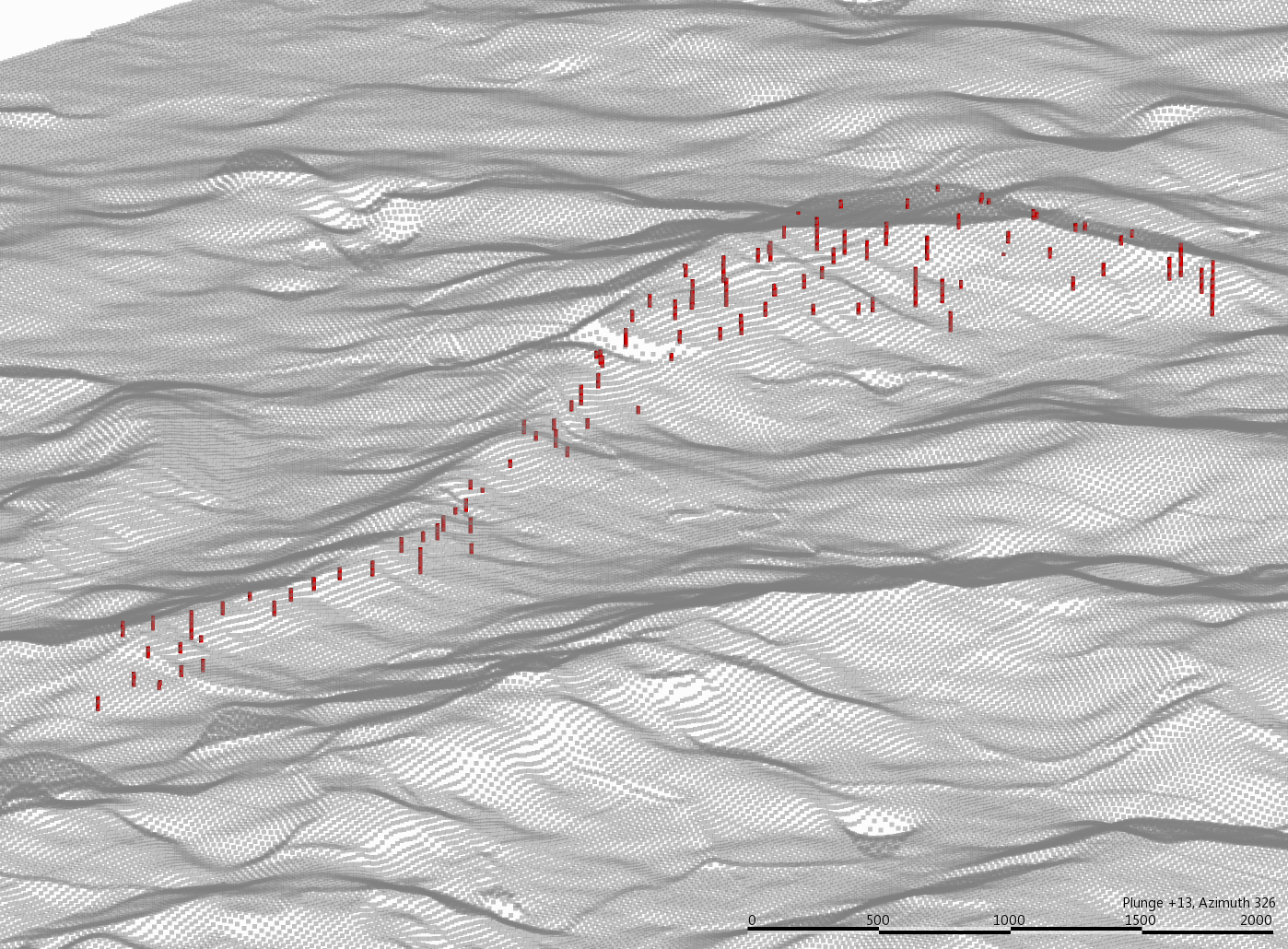Chapter 3
Machine learning & AI

AI a new tool, not a replacement tool
Taking a systematic approach should include all available inputs, used properly
By Ben Jupp, Principal Consultant (Geology), SRK Consulting
Exploration will be transformed by a wholistic approach using traditional tools and new technology, rather than a silver bullet from the technology space.
Improving exploration success is about marrying the available tools with the right process to address a particular problem. That includes ensuring the right datasets are being used in the analysis process, and the right algorithms are being used to get the best results from an AI process but that’s not where the process starts.
Key tools like GIS and 3D modelling based on basic fieldwork, geological datasets and established geophysical techniques and processing have been fundamental for a long time and still very much remain relevant in exploration and defining mineral targets. But today, these datasets are now commonly feeding into a various statistical analysis and predictive methods, integrating with a wide range of datasets to target mineralisation. These datasets when integrated together can provide greater context to the mineral systems, as opposed to looking at the datasets in isolation to make exploration decisions. Applying machine learning or AI technology to these datasets is also further adding the suite of tools for predicting mineralisation, enhancing potential results and targets.
The goal that we are more regularly achieving when taking this approach is to build a systems framework capable of supporting predictive discovery.
While this may sound logical, we are seeing practical examples of exploration teams over-emphasising the potential of AI as a standalone discovery tool.
As powerful as AI already is and will no doubt improve, the results are only as good as the data that is being fed in, and the instruction being applied. As such, all data should ideally be correct and representative of the mineral system that you’re looking at. The refinement, efficiency and predictive powers AI is capable of delivering can only be realised if it is sitting on a credible foundation of geological process.
Drilling exploration holes is expensive, so you need to have confidence in the results that your processes are spitting out. That comes with a bedrock of sound geological practice, data collection, and then processing and application of modern technology.
Technology will continue to evolve and will one day have the power to deliver a true step change in discovery rates when fed with good data. But that day is some way off, yet.
Discovery at depth is our Everest as exploration teams. Better geophysical technologies are leading to better data for modelling, interpretation and predictive exploration. Some of the results we have been seeing give us hope that significant discoveries under cover will become more commonplace.
There is no doubt AI will push the boundaries of how we can look at our datasets and approach targeting. But it is difficult to imagine a time when the need for sound data collection and analysis to feed cutting-edge processing tools becomes unimportant.

AI in prospectivity and deposit evaluation
By Nicolaas Steenkamp, Principal Consultant (Geology), SRK Consulting
Interest in the application of Artificial Intelligence (AI) and how it can shape the future of mineral exploration was put in the spotlight recently by KoBold’s Mingomba project in Zambia, where the technology was utilised in re-interpreting the copper deposit. The success of an AI-based evaluation of a mineral prospect is dependent on the quality of the geological and geochemical data that is ingested into the platform.
At the deposit scale, the role of the geologist with field experience remains irreplaceable. This ranges from mapping, corelogging and sampling to first rough drafts of the lithologies. Their boots-on-the-ground knowledge aid in delineating exploration targets and evaluating the sample material being collected. This includes ensuring that all sampling is done according to the industry best practice QA/QC and meeting the requirements of the selected mineral reporting code (i.e., an important aspect towards quality data).
AI offers the potential to combine, and more time and cost effectively generate additional targets at the prospect scale, by considering the data from the various disciplines, such as geology, structural geology, remote sensing, geochemistry, geophysics, geotechnical and ultimately modelling outputs. The current subject matter experts need to emphasize the importance of evaluating data quality, in terms of validity, accuracy and relevance, that is used as input data and the critical interpretation of the results produced by the AI platform. The models being produced by the AI platform need to be considered if it is realistic, based on the geological setting and the recognised mineralisation processes.
The development of effective AI systems cannot be done in isolation and requires collaboration in the industry. However, when practitioners are sharing or presenting data, workflows, etc, they need to ensure that any sensitive and propriety company and/or project information used in developing better tools or model results remains confidential and therefore, would need to be removed before entering the public domain.

Explorers must work within data limitations
The AI evolution has some distance to travel but there is value in current iterations
By Antoine Caté, Senior Consultant (Structural Geology), SRK Consulting
Data analytics is not a revolution in exploration, it’s an innovation.
It helps with our workflows and creates insight from data in a way geoscientists could not if working with traditional methods alone.
The current buzz around AI risks both under and overstating its impact on mineral exploration. Either would be a mistake. It is important we acknowledge both its limitations and its power.
When we do this and apply analytics practically, we’re seeing outsized results.
For example, we have worked on both large geochemical databases and huge drillcore image banks with great success. For the former, the key was the identification of trends through the combination of very specific datasets analysed with context. For the latter, it was largely the volume of data that was unmanageable and needed a solution. In both cases, the technology delivered huge efficiencies.
In contrast, we’ve done tests on large language models and despite some exciting successes, we found significant limitations to the technology.
This emphasises the need to test what does and doesn’t work with the technology as it stands today in its evolutionary journey. This is about being rational and working within those limitations.
In those examples of successful application, expert knowledge was instrumental in the results.
For the geochemistry project, the context needed was provided by the geoscientists driving the software. They moved the instructions and inputs to ensure the algorithm was trained on relevant in-ground examples. For the drillcore image-recognition project, quality control and selective intervention played a key role in the process.
We are not at the point where we can leave analytical software with a deposit of data and come back to insight. This may be the case one day, but we are not there yet.
In a best-practice example, geologists and data scientists would be working in the same team and combine their expertise to get valuable insight from data.